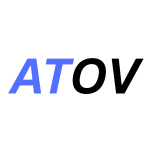1. Introduction – Why SaaS is the Future of Business
Software as a Service (SaaS) is rapidly growing in 2025. Businesses prefer subscription-based software because it is convenient, scalable, and reduces upfront costs.
Launching a SaaS business allows entrepreneurs to build recurring revenue streams and reach a global audience through cloud-based solutions.
2. What is a SaaS Business?
A SaaS business provides software applications over the internet, usually via a subscription model. Users access the software through a browser or app without installing it locally.
Examples:
-
Google Workspace (productivity tools)
-
Slack (team collaboration)
-
Shopify (e-commerce platform)
-
Canva (design tool)
3. Benefits of Launching a SaaS Business
-
Recurring Revenue – Subscriptions generate predictable income
-
Scalability – Serve unlimited users with minimal infrastructure
-
Global Reach – Cloud-based delivery allows access anywhere
-
Lower Operational Costs – No physical product or distribution required
4. Market Research & Niche Selection
-
Identify your target audience and pain points.
-
Analyze competitors to find gaps in the market.
-
Focus on a niche with high demand but moderate competition.
Example: Instead of a general project management tool, create a SaaS for freelancers or creative teams.
5. Building Your SaaS Product
a) Choosing the Right Tech Stack
-
Frontend: React, Angular, or Vue.js
-
Backend: Node.js, Python (Django/Flask), or Ruby on Rails
-
Database: PostgreSQL, MongoDB
-
Cloud Hosting: AWS, Google Cloud, or Azure
b) MVP Development
Start with a Minimum Viable Product (MVP) to test your idea quickly. Include core features to solve the primary problem for your users.
c) Scalability and Cloud Infrastructure
Use cloud services and microservices architecture to ensure your SaaS can scale as your customer base grows.
6. Pricing Strategies for SaaS
-
Freemium Model – Free basic version with paid upgrades
-
Tiered Pricing – Multiple subscription plans for different user needs
-
Usage-Based Pricing – Charge based on usage or features
-
Annual vs Monthly Subscriptions – Encourage annual plans for predictable cash flow
Example Chart: SaaS Pricing Models
7. Marketing and Customer Acquisition
a) Content Marketing
-
Blogs, guides, and case studies showcase your expertise
-
Helps improve SEO and organic traffic
b) Social Media & Paid Ads
-
Use LinkedIn, Facebook, and YouTube ads to target potential customers
-
Retarget visitors with personalized campaigns
c) Partnerships and Referral Programs
-
Collaborate with influencers, affiliates, or complementary SaaS products
-
Encourage referrals with discounts or incentives
8. Customer Retention & Engagement
-
Use in-app notifications, emails, and chatbots to keep users engaged
-
Offer training, tutorials, and webinars for better adoption
-
Monitor usage to identify at-risk customers and take action
9. Analytics and Performance Tracking
-
Track conversion rates, churn, and customer lifetime value (CLV)
-
Use tools like Google Analytics, Mixpanel, or Hotjar
-
Adjust product and marketing strategies based on data
10. Monetization & Profitability
-
Focus on reducing churn to maximize recurring revenue
-
Upsell premium plans and add-ons
-
Offer enterprise-level solutions for higher revenue
-
Keep operational costs low to improve profit margins
Example Chart: SaaS Revenue Growth Timeline
11. Challenges & How to Overcome Them
-
High Competition – Focus on niche markets and unique features
-
Customer Acquisition Costs (CAC) – Optimize marketing channels and improve conversion rates
-
Churn – Provide excellent support and product value
-
Scaling Infrastructure – Use cloud services to handle growth efficiently
12. Future Trends in SaaS for 2025
-
AI-Powered SaaS – Automation, predictive analytics, and personalization
-
Vertical SaaS – Solutions designed for specific industries
-
Embedded SaaS – Integrating tools within existing platforms for seamless user experience
-
Voice and Chat Integration – Voice commands and AI chat support in SaaS products
-
SaaS Security Focus – Enhanced encryption, compliance, and zero-trust architecture
13. Conclusion
Launching a profitable SaaS business in 2025 requires market research, a strong MVP, smart pricing, and effective marketing. By leveraging modern technology, understanding your niche, and prioritizing customer experience, you can build a scalable and sustainable SaaS business with recurring revenue and long-term growth potential.
The key is to start small, iterate quickly, and focus on delivering value to your users while tracking data and optimizing continuously.
14. Graphs & Visual Insights
Graph 1 – SaaS Revenue Growth by Month
(Suggested Visual: Line graph showing steady revenue growth over months)
Graph 2 – SaaS Pricing Models Comparison
(Suggested Visual: Bar chart for easy comparison)
Visual Enhancements:
-
Flowchart of SaaS Launch Steps: Market Research → MVP → Marketing → Growth
-
Infographic showing Key Metrics to Track: CAC, CLV, Churn, ARR
-
Pie chart displaying Revenue Distribution Across Plans
